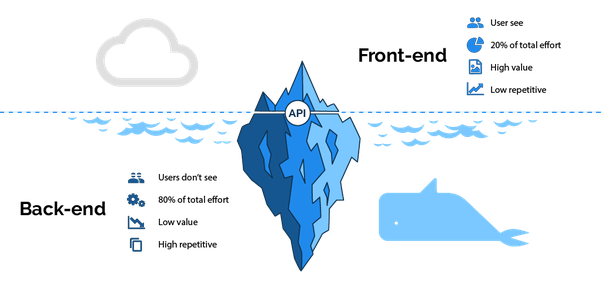Comprehensive Guide to Enterprise IT Service Automation
IT support automation uses software workflows, rule engines, AI/ML, and integrations to automate...
There's a lot of talk these days about Backend-as-a-Service (BaaS), but what is it? Simply put, BaaS is a way to outsource the backend of your application. This...

There's a lot of talk these days about Backend-as-a-Service (BaaS), but what is it? Simply put, BaaS is a way to outsource the backend of your application. This can be done for a variety of reasons: to save time and money, to take advantage of specialized features or services, or to offload development work to someone else. In this post, we'll explore how backend-as-a-service works and how you might use it in your workflow automation projects.
More completely, Backend-as-a-Service is a cloud computing model in which a third party provider like Kinetic Data delivers backend services — such as storage, connectivity, and processing — to customers who use these services to develop and run their own applications.
Customers subscribe to the provider’s BaaS offerings with a variety of license, subscription or pay-as-you-go models. At Kinetic, we offer Backend-as-a-Service solutions for tech savvy individuals looking to improve their business processes with smart workflow automation. Organizations choose Kinetic for our security, scalability, flexibility and safety.
Backend services are typically delivered through a set of APIs that can be accessed by the customer’s application code. This means that you don't have to worry about setting up and maintaining servers or managing complex infrastructure; all of that is taken care of by the BaaS provider.
In addition, BaaS providers often offer SDKs (software development kits) that make it easy to integrate their services into your application.One of the main advantages of using BaaS is that it can significantly speed up development time.
Rather than using off-the-shelf solutions or having to write and maintain your own backend code, you can simply make calls to the BaaS APIs. This can save a lot of time and effort, especially if you're resource constrained.
In addition, BaaS providers often offer ready-made solutions for common tasks such as user management and authentication, which can again save you significant development time and hassle.
Another advantage of BaaS is that it can make it easier to scale your application. If you're using a BaaS provider that offers storage and database services, then you don't have to worry about provisioning additional servers or capacity as your user base grows. The BaaS provider will take care of all of that for you. This can be a huge time-saver, and it can also help to reduce the overall cost of running your application.
While backend-as-a-service may be a relatively new concept for many, there are a few issues that developers who create or use BaaS products should be mindful of before implementing or using a BaaS system.
One of the main issues is continuity in the consumable APIs and SDKs. This means each one should be able to be consumed repeatedly in the same way, across the backend. This creates less confusion to consumers, as they can learn the patterns and code once for consumption of any API you provide, instead of having to learn different rules for each product.  Image source
Image source
BaaS is focused on making it easy for developers to connect their mobile and web applications to backend services.
Who doesn’t want more time innovating and experimenting with user experiences? Or spending less time focused on building and handling all of the backend tasks that are needed to power an application?
BaaS providers build and maintain the pluggable infrastructure so you don't have to. This includes tasks such as user authentication, push notifications, file storage and database management.
In contrast, other ‘as-a-Service’ offerings like Platform-as-a-Service and Infrastructure-as-a-Service support base needs for a developer:
If you're looking for a way to speed up your workflow and focus on your application's frontend, then Backend-as-a-Service might be the right solution for your organization.
With BaaS from Kinetic Data, you can get your application up and running quickly and easily, without having to worry about all the issues “underneath the water.”

IT support automation uses software workflows, rule engines, AI/ML, and integrations to automate...

Business process reimagined is the strategic renewal of how work gets done by combining modern digital...

You've probably noticed (what we're calling) the "logo-swap test" lately: all the AI ads in market sound...